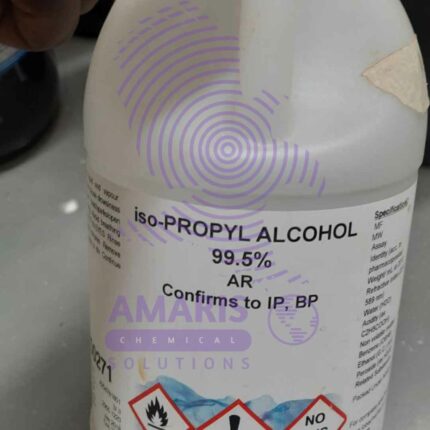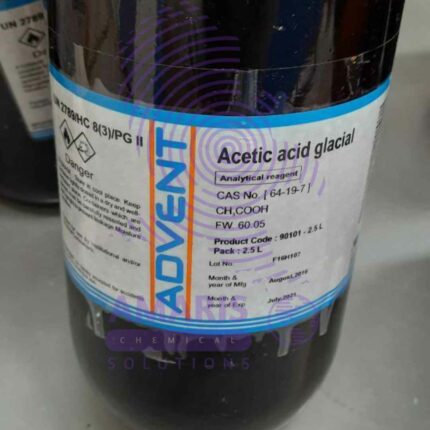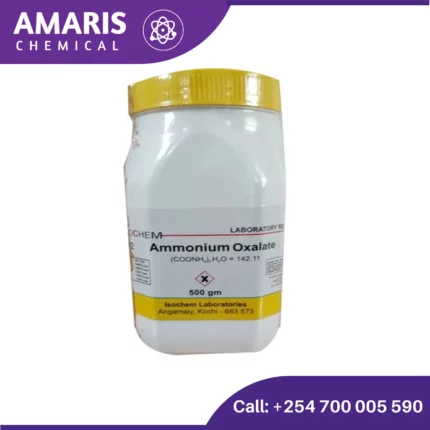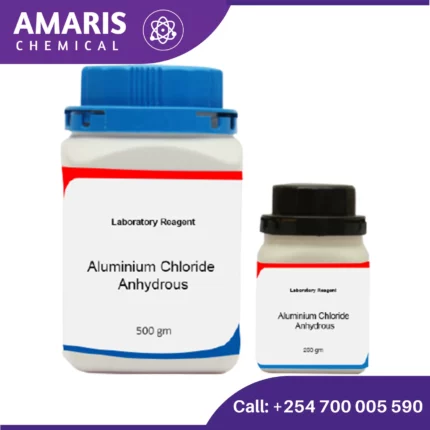“Anhydrous Aluminum Chloride” has been added to your cart. View cart

Cooling Mint Floral fragrance
$17,000.00 Original price was: $17,000.00.$15,500.00Current price is: $15,500.00.

Dextrose monohydrate 500gms
$2,300.00 Original price was: $2,300.00.$2,200.00Current price is: $2,200.00.
Sodium acetate anhydrous 99% 500gms
$2,500.00 Original price was: $2,500.00.$2,300.00Current price is: $2,300.00.
Whatsapp Order
Sodium acetate, with the chemical formula CH3COONaCH3COONa, is a versatile compound commonly used in laboratories for various applications.
SKU:
ACS73742CHEM0
Category: Analytical Reagents
Description
uses of Sodium acetate
- Buffer Solutions:
- pH Stabilization: Sodium acetate is a key component in buffer solutions, especially acetate buffers, which are used to maintain a stable pH in biochemical and chemical experiments. These buffers are particularly effective in the pH range of 3.6 to 5.6.
- Applications: Commonly used in enzyme reactions, cell culture media, and other biological assays requiring a specific pH environment.
- Precipitation of Nucleic Acids:
- DNA/RNA Isolation: Sodium acetate is used in the precipitation of DNA and RNA from aqueous solutions. By adding sodium acetate and alcohol (ethanol or isopropanol), nucleic acids can be precipitated and separated from the solution, facilitating their purification and concentration.
- Procedure: After adding sodium acetate and alcohol to the nucleic acid solution, the mixture is often cooled, centrifuged, and the precipitated nucleic acids are collected.
- Chemical Synthesis:
- Source of Acetate Ions: Sodium acetate provides acetate ions for various organic synthesis reactions.
- Applications: Used in the synthesis of esters, acetylation reactions, and as a catalyst in certain organic transformations.
- Heat Packs:
- Exothermic Crystallization: Sodium acetate is used in reusable heat packs. A supersaturated solution of sodium acetate releases heat upon crystallization, which can be triggered by flexing a metal disc within the pack.
- Mechanism: The solution remains liquid until the disc is clicked, initiating crystallization and an exothermic reaction that releases heat.
- pH Adjustment:
- Solution Preparation: Sodium acetate is used to adjust the pH of various solutions in chemical and biological protocols.
- Control: It is often added to acidic or basic solutions to achieve a desired pH level.
- Electrophoresis:
- Buffer Preparation: In electrophoresis, sodium acetate can be used to prepare running buffers, particularly for RNA electrophoresis.
- Function: Helps maintain the ionic strength and pH of the buffer system during the separation process.
- Titration:
- Analytical Reagent: Sodium acetate is employed as a reagent in titration methods, such as complexometric titrations involving EDTA.
- Role: Acts as a buffering agent to maintain a stable pH during the titration process.
- Food Preservation (Industrial Use):
- Preservative: Although not strictly a laboratory use, sodium acetate is also used as a preservative in the food industry to inhibit microbial growth and as a flavoring agent (E262).
- Applications: Helps in extending the shelf life of various food products.
Reviews (1)
1 review for Sodium acetate anhydrous 99% 500gms
Add a review Cancel reply
Related products
2 Propanol 2.5 litres (IPA)
Isopropyl alcohol (IPA), also known as 2-propanol, is a colorless, flammable chemical compound with the molecular formula C3H8O. It is a type of alcohol that is commonly used as a solvent, disinfectant, and cleaning agent in a variety of industries, including healthcare, manufacturing, and electronics. IPA is often used as a disinfectant because it is effective at killing a wide range of microorganisms, including bacteria, viruses, and fungi. It is also commonly used as a solvent for oils, resins, and gums, and as a cleaning agent for electronic devices and other equipment.
Acetic Acid 2.5litre
Acetic acid is an organic acid with the chemical formula CH3COOH, also known as ethanoic acid. It is a colorless liquid with a pungent, sour taste and a distinctive vinegar-like odor. Acetic acid is an important industrial chemical used in the production of various products, including solvents, plastics, textiles, and food additives. It is also the main component of vinegar, which is commonly used as a condiment and preservative in cooking and food preparation.
Aluminum Potassium Sulphate 500gm
Aluminum Potassium Sulphate, commonly known as potassium alum or potash alum, is a chemical compound with the formula KAl(SO₄)₂·12H₂O. It is a type of alum, a double sulfate salt, and is typically found in its dodecahydrate form. Here are some key points about this compound:
Physical Properties:
- Appearance: Colorless, transparent crystals or white powder.
- Solubility: Soluble in water but insoluble in alcohol.
- Melting Point: Decomposes at high temperatures before melting.
Chemical Properties:
- Molecular Formula: KAl(SO₄)₂·12H₂O
- Molecular Weight: 474.39 g/mol (for the dodecahydrate form)
- Acidity: It is slightly acidic in aqueous solution.
Ammonium Acetate 25kgs
Ammonium acetate is a chemical compound with the formula NH4CH3CO2. It is a white, crystalline solid with a vinegar-like odor. It is commonly used in various laboratory applications, such as in molecular biology and analytical chemistry. It can act as a source of acetate ion in reactions and is often used as a buffer solution in biochemical and molecular biology research. Additionally, it is sometimes used in the manufacture of other chemicals and as a food additive.
Ammonium Chloride 500gm
Ammonium chloride is an inorganic compound with the chemical formula NH4Cl. It is a white crystalline salt that is highly soluble in water and has a salty taste. Ammonium chloride is often used in various industrial and laboratory applications, including as a flux in soldering, as a nitrogen source in fertilizers, and as a component in dry cell batteries. It can also be used in medicine as an expectorant to help thin and loosen mucus in the respiratory system
Ammonium Nitrate 500gm
Ammonium Oxalate 500gm
Anhydrous Aluminum Chloride
Anhydrous aluminum chloride, often represented as AlCl3, is a chemical compound composed of aluminum and chlorine. "Anhydrous" means it lacks water molecules in its structure. It's a white or pale yellow solid that is highly hygroscopic, meaning it readily absorbs moisture from the air. This property makes handling it a bit tricky since it can form a solution with water vapor in the air, turning into a fuming liquid.



 LABORATORY EQUIPMENT & APPARATUS
LABORATORY EQUIPMENT & APPARATUS
 Fertilizers
Fertilizers Plant Growth Regulators
Plant Growth Regulators Soil Conditioners
Soil Conditioners Animal Feed Additives
Animal Feed Additives Biostimulants
Biostimulants Dough Conditioners
Dough Conditioners Flour Treatments
Flour Treatments Fat Replacers
Fat Replacers Preservatives (baking)
Preservatives (baking)
 Surfactants (cleaning)
Surfactants (cleaning) Builders
Builders Bleaching Agents
Bleaching Agents Enzymes
Enzymes Solvents (cleaning)
Solvents (cleaning) Fragrances
Fragrances

























Nandwa –
Its highly soluble in water